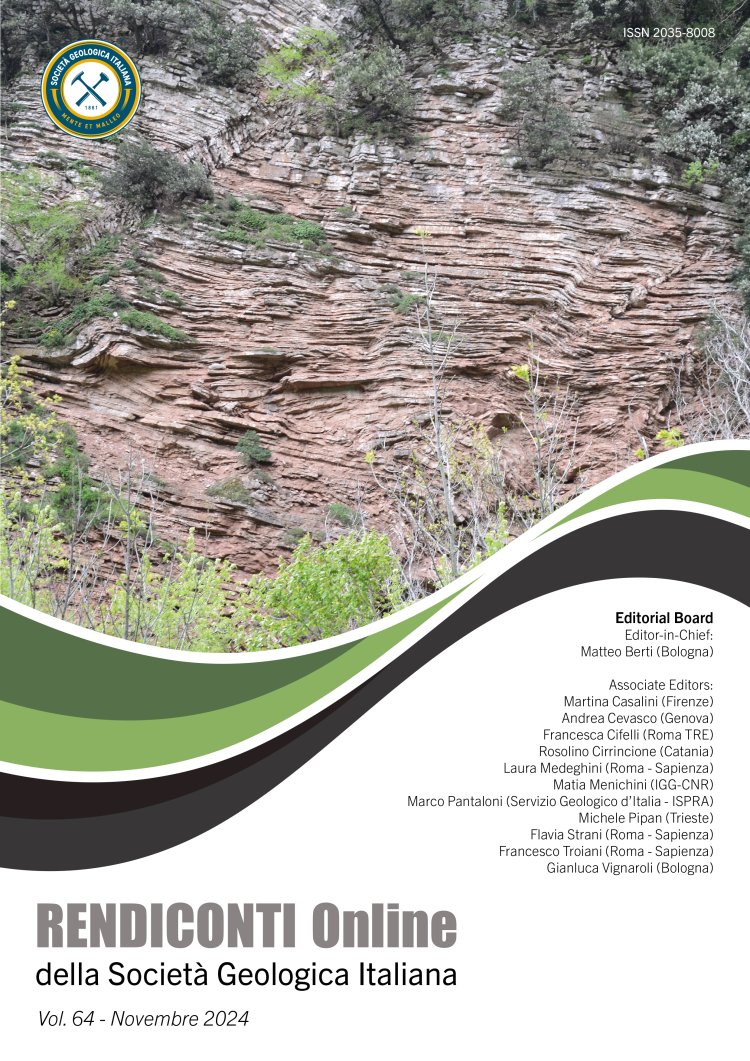
Matera “foggials” (Southern Apennines): Multi-analytical characterization of the natural coatings of local grain storage structures
Roberto Buccione1, Costanza Lancellotti1, Bruna Gargiulo2, Francesca Sogliani2 & Giovanna Rizzo1
1Department of Sciences, University of Basilicata, Via dell' Ateneo Lucano, 10 85100 Potenza, Italy.
2School of Specialization in Archaeology, Department of European culture and Mediterranean, University of Basilicata, Via Lanera, 20 75100 Matera, Italy.
Corresponding author e-mail: roberto.buccione@unibas.it
Volume: 64/2024
Pages: 43-53
Abstract
This paper focuses on a multi-analytical characterization of Matera (Basilicata region, southern Italy) foggials used to collect and store grain commodities to define their uses and the mineralogical, petrographic and geochemical features.
The old district of Matera (Sassi) was recognized as a UNESCO heritage site since 1993. Fifteen samples of rock fragments (generally limestone or calcarenites) and coatings were collected from 4 different sites in the centre of Matera.
Petrographic observation with optical microscope and mineralogical analysis showed that the mineralogical assemblage mainly consists of calcite and quartz and subordinately, Fe-hydroxides. The most abundant major oxides are CaO, Al2O3 and SiO2 while among the trace elements, the most enriched are Pb, Sr, Cr, Ba and V. The REEs pattern shows a general flat distribution with no enrichment or depletion of LREEs and HREEs. A negative correlation between CaO and ∑REEs content suggests that REEs has no affinity for carbonate phases. The multi analytical characterization let us to hypothesize that Apulia region, in particular the Apulian “red earth” from Murge area, could be among the areas of origin of the materials used to produce the Matera foggials coatings.
Keywords
Get Full Text